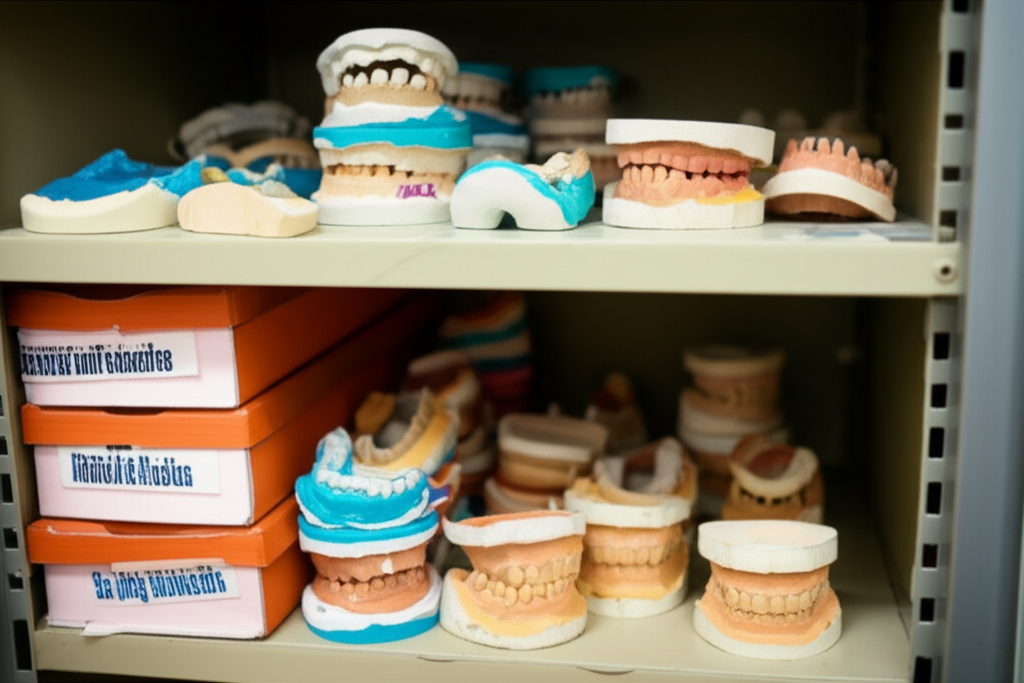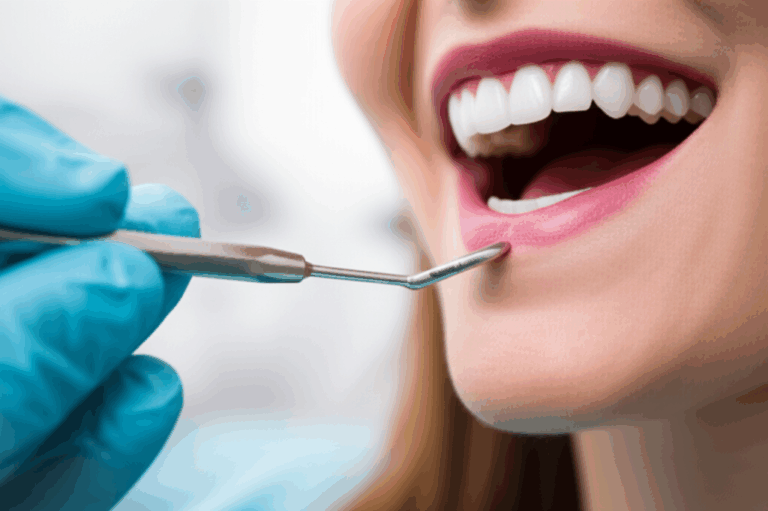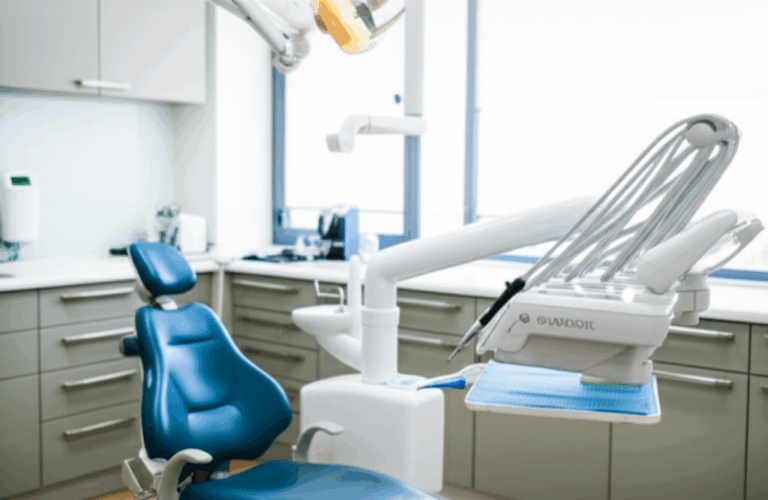
How Long Do Dentists Keep Retainer Molds? Your Essential Guide
Have you ever lost a retainer, switched dentists, or wondered what happens to those sticky teeth molds from when you had braces? If you want answers about how long dentists keep retainer molds (the casts or scans of your teeth), you’re in the right place. If you’re hoping to save money on a new retainer, worried about what’s on your dental record, or just curious—this guide will help you.
It’s a common, useful question—sometimes even an urgent one! Let’s break it down, so you know what to expect.
In This Article
- The Short Answer: It Varies (But There Are Rules)
- Why Dentists and Orthodontists Keep Retainer Molds
- Typical Retention Periods: What to Expect
- Physical Molds vs. Digital Impressions: A Changing World
- What Happens If Your Original Mold Is Gone?
- Can You Get Your Retainer Molds (or Copies)?
- Best Tips for Patients: Keeping Your Straight Smile
- Key Takeaways on Retainer Mold Retention
- Frequently Asked Questions (FAQs)
The Short Answer: It Varies (But There Are Rules)
To answer your question first: How long do dentists and orthodontists keep retainer molds?
Short answer: It depends—but there are rules.
Most dentists and orthodontists keep your retainer molds for 5 to 10 years after your last visit. If you were a minor, they’ll keep them until several years after you turn 18 (or even 21, depending on the state). Some places save records for 10 to 20 years, especially with digital storage.
Why is there such a range? Several things affect this timeline:
- State laws about record keeping (these set the bare minimum).
- Professional rules from dental groups like ADA or AAO.
- The clinic’s own rules and how much space they have, especially for big, fragile casts.
- How old you were (records for kids are kept longer).
- What kind of record it is—physical mold, digital scan, or 3D model—all change how long it’s easy to keep.
Don’t be surprised if your orthodontist has to check, or your dentist says, “We keep molds for 7 years, then we throw them out safely.”
Why Dentists and Orthodontists Keep Retainer Molds
Now you might wonder, why do they keep those molds at all? Isn’t a note in your file enough? Actually, no.
1. A Clear Record of Treatment
Dentists like “show, don’t tell.” Retainer molds—impressions, casts, or scans—are real proof of your teeth’s journey. Think of your mouth as a map, and these molds are the “before” and “after” photos of your teeth.
2. Legal Protection and Avoiding Lawsuits
Dentists keep records to protect themselves, too. If there’s ever a question about what work was done, those molds show what your teeth looked like before and after. They help solve problems and settle arguments if they come up years later.
3. Looking Back for Dental Care
Teeth keep moving, even after braces. Old molds help your new dentist see what your normal bite was supposed to look like, which helps when fixing problems later on.
4. Quick Retainer Replacement
This is a big one. If you lose your retainer and your mold is still available, making a new one is much faster (and usually cheaper) than starting from scratch. The lab just uses the old mold—no new impression needed.
5. Learning Tool
Sometimes dentists use your molds to explain things, like, “See how your bite shifted since your treatment ended?” They can help students or new staff too.
In short: Your mold is more than just a piece of clay—it’s part of your dental health history!
Typical Retention Periods: What to Expect
How long is your retainer mold kept? Here are some quick facts and real examples.
1. Professional Guidelines (ADA, AAO, etc.)
- Adults: Molds are kept in your dental record for 7-10 years after your last visit.
- Minors: If you were under 18, your records (and molds) stay 7-10 years after you turn 18, sometimes more.
2. State Laws
Not all states are the same:
- California: 7 years after last treatment, or 7 years after a minor turns 18.
- New York: 6 years after last visit, or 6 years after a minor grows up.
- Florida: 5 years (sometimes less for minors, but most clinics keep them longer).
Tip: Most dental offices keep records longer than the law says—just to be careful for insurance, care, and peace of mind.
3. Patient Age
Molds for kids usually stick around the longest, since kids’ records might be important for later work as they grow.
4. Clinic Policy
Space matters! Small clinics may get rid of old, fragile plaster models as soon as they can, while clinics with digital files might say, “We have your records safely in the cloud forever.”
Physical Molds vs. Digital Impressions: A Changing World
In the past, every retainer mold was a chalky, fragile cast sitting in a backroom, easy to break and hard to save for years. Now? Things are changing fast.
Problems with Storing Physical Molds
Storing retainer molds is like keeping hundreds of snow globes on a shelf. They take up space, gather dust, and break easily. Even the strongest plaster can chip if it’s dropped, and weather changes can make them warp.
The Move to Digital Scans and 3D Models
Now, many dental offices use fancy scanners instead of messy putty. Digital impressions are:
- Easy to copy
- Simple to store for years
- Can’t break
- Quick to send to labs or new dentists
Today, over half of orthodontic practices use digital scans—and more switch every year. Want to learn more? Take a look at how a 3d dental lab works.
How Digital Molds Change Record Keeping
Physical molds eventually get tossed, but digital records? As long as the office keeps their computer stuff up to date, they can keep a scan of your teeth for a really long time. It’s more like having files in a safe computer folder than old shoes in a closet. If you need a retainer years later, your scan is likely still there.
Can Old Physical Molds Be Turned Digital?
If your plaster cast is still whole, yes! Dentists can scan it and make a digital copy. But once that plaster is broken (or thrown away), it’s gone for good. So, if you want a digital copy, don’t wait too long to ask.
What Happens If Your Original Mold Is Gone?
Lost your retainer? Moved away? Maybe you’re hoping the old mold still exists. Sometimes it’s just missing—thrown out when storage time ran out, or it got broken.
Need a New Impression
No mold, no shortcut. If your model is missing, your dentist will need a new impression (with putty or a scanner) to make a new retainer. This is needed for:
- Essix retainers (clear trays)
- Hawley retainers (the old-school wire and plastic kind)
- Vivera, bonded, or other special retainers
Time and Cost
- New visit: You’ll have to come in for a new impression.
- Fee for the new impression or scan: Usually $50 to $250, depending on where you are and what tech they use.
- Wait time: The lab needs some time to make your new retainer—sometimes a week or so.
Types of Retainers
No matter what kind you had—Essix, Hawley, Vivera—you need an accurate new model for a good fit.
Want a new provider? Look for a dental lab for retainers to make sure you get a good, proper retainer.
Can You Get Your Retainer Molds (or Copies)?
Good news: You have a right to your dental records, and retainer molds count as part of that.
Your Rights to Dental Records
- Physical molds, digital scans, and x-rays are all considered “records” in the eyes of the law.
- You can ask for a copy or to have records sent to a new dentist. The actual, original mold usually stays with your old dental office.
Costs for Copies or Transfers
- Offices may charge a small fee for copying or sending your records—like paying for photo copies of your medical file.
- If you’re moving or want a digital scan sent somewhere, just ask.
Who ‘Owns’ the Molds?
- Most offices see the retainer mold (especially plaster ones) as their property, part of your medical record.
- Some might give you the actual mold if you ask, but most give copies or digital files.
How To Get Your Records
If you plan to switch dentists or move away, ask about digital scans and record transfer rules before you leave. It’ll save you trouble later!
Best Tips for Patients: Keeping Your Straight Smile
Let’s be smart—think of this as your easy guide to staying on top of your orthodontic care.
- Wear your retainer as told. Doing this now saves you from headaches later.
- Clean your retainer the right way. Only use what your dentist says. Rinse, brush, and soak as directed.
- Store it carefully. Losing or breaking a retainer is very common (just ask any dentist’s office!).
- Call your dentist right away if there’s a problem. Don’t wait—teeth can move back fast, especially soon after braces.
- Ask about digital scans. If your dentist or orthodontist hasn’t switched, see if you can get a digital record for easy future repairs.
- Keep track of your dental visits and work. If you move or start with a new dentist, you’ll know what to ask for.
If you’ll need other dental work soon, like crowns or veneers, you might want to know your options, such as a veneer lab, in case you need another impression later on.
Key Takeaways on Retainer Mold Retention
Here’s an easy summary:
- Most dentists keep retainer molds for 7-10 years after your last visit, or longer for kids.
- State laws set the lowest time, but most clinics keep records for longer—especially with digital scans.
- Molds matter for legal and dental reasons. They’re not just for show.
- Digital scans can be kept a very long time, which makes getting replacements easier.
- If your mold is gone, you’ll need to pay for a new impression or scan before a making new retainer.
- You can ask for your records, but may pay a small fee for copies or sending them.
Frequently Asked Questions (FAQs)
Do orthodontists keep molds longer than regular dentists?
Yes—orthodontists usually keep molds and records longer than family dentists. Their work depends on details and can take years, so they might save models for a long time, especially with digital records.
Can I get a new retainer without a mold or new impression?
Nope. To make any retainer—clear (Essix, Vivera), Hawley, or even fixed ones—a current model is needed for a good fit. If the old mold or scan is gone, you need a new impression.
Is it expensive to get a new impression for a replacement retainer?
It can cost anywhere from $50 to $250 for a new impression or scan. The price changes by area, impression type, and the dentist’s prices.
Are dental molds part of my medical records?
Yes—they’re officially part of your dental record, both under the law (like HIPAA) and pro dental guidelines. You can ask to see, copy, or move them to another provider.
What if my old dentist has retired or closed?
Most states require retired dentists to store or pass on patient records (including molds and scans). If you can’t find your dentist, try your state dental group or look for a china dental lab with record searching experience.
Your Healthy Takeaway
Retainer molds aren’t forever—but your info can be. Now, you know what happens with your records and can ask smart questions, whether at a checkup, moving away, or trying to get a new retainer.
Remember:
- Molds aren’t kept for life, but digital scans might be.
- Call quickly if you lose your retainer. The faster you contact your dentist, the better.
- Don’t be afraid to ask about your records. Knowing more helps!
Want to know more about how retainers are made? Check out what a 3d dental lab does for today’s dentists.
Still wondering? Don’t be shy. Call your dentist, ask about your records, and take charge of your smile. Your future self will thank you!








